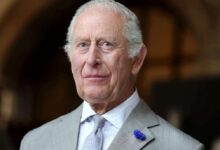
Prince George, the firstborn son of Prince William and Princess Kate, stands out in the British royal family as a figure of both tradition and change. Born on July 22, 2013, his arrival represented not only a new addition to the Windsor lineage but also a profound shift in the monarchy’s approach to succession and values. As the heir to the throne, George embodies both a legacy rooted in history and a future focused on modernization—a distinction unique among his generation in the royal family.
With his birth came sweeping changes to royal succession laws. Before George, the British monarchy adhered to male-preference primogeniture, where sons were prioritized over daughters in line to the throne. This outdated practice was revised with the Succession to the Crown Act of 2013, passed just months before George’s birth. Under this law, the firstborn child—regardless of gender—would secure their position in line to the throne. This means that had George been born a girl, she would still have been next in line after Prince William. This landmark change signified a move towards gender equality within the institution, reflecting a monarchy willing to evolve alongside societal values.
The public reception of Prince George’s birth was nothing short of a global celebration. Traditional announcements were made, and in keeping with royal custom, Buckingham Palace placed an easel outside to inform the world of the royal arrival. Crowds gathered, the nation celebrated, and news of the birth traveled worldwide. Queen Elizabeth II was one of the first to receive the joyful news, a moment that marked a personal milestone for her as well, as George was her great-grandson. In her Christmas message that year, the Queen alluded to the joy his arrival brought, noting that her family had grown and that the birth offered a renewed sense of hope for the future.
Beyond tradition, George’s upbringing reflects the Duke and Duchess of Cambridge’s commitment to providing him and his siblings, Princess Charlotte and Prince Louis, with as normal a childhood as possible. Despite his future role as king, Prince George is often seen sharing tender and playful moments with his family. Kate and William manage a careful balance between George’s public role and his life as a child, allowing him to participate in select royal events while keeping many aspects of his life private.

One of George’s most endearing relationships was with his great-grandmother, Queen Elizabeth II. Known affectionately as “Gan-Gan” by George, the Queen cherished her time with her great-grandchildren, often leaving small gifts in their rooms during family visits. In a documentary celebrating the Queen’s 90th birthday, Princess Kate shared these personal anecdotes, giving the public a glimpse into the close bond between George and his “Gan-Gan.” This connection provided George with a strong sense of family and an early understanding of his heritage and responsibilities.
As Prince George grows, so does the public’s curiosity about him and the role he will eventually assume. His position symbolizes a bridge between time-honored customs and a modernized monarchy. Fans of the royal family see him as embodying both the stability of the British monarchy and its progressive shift towards inclusivity and modern values. Many hope that George will inherit the Queen’s steadfastness, his parents’ dedication to public service, and the monarchy’s evolving ideals.
Prince George’s journey as a royal and future king will continue to unfold under the watchful eyes of both his family and the world. His story is one that reflects the delicate balance between upholding tradition and embracing necessary change. In this way, George doesn’t just represent a future king; he represents a new era for the British monarchy.








